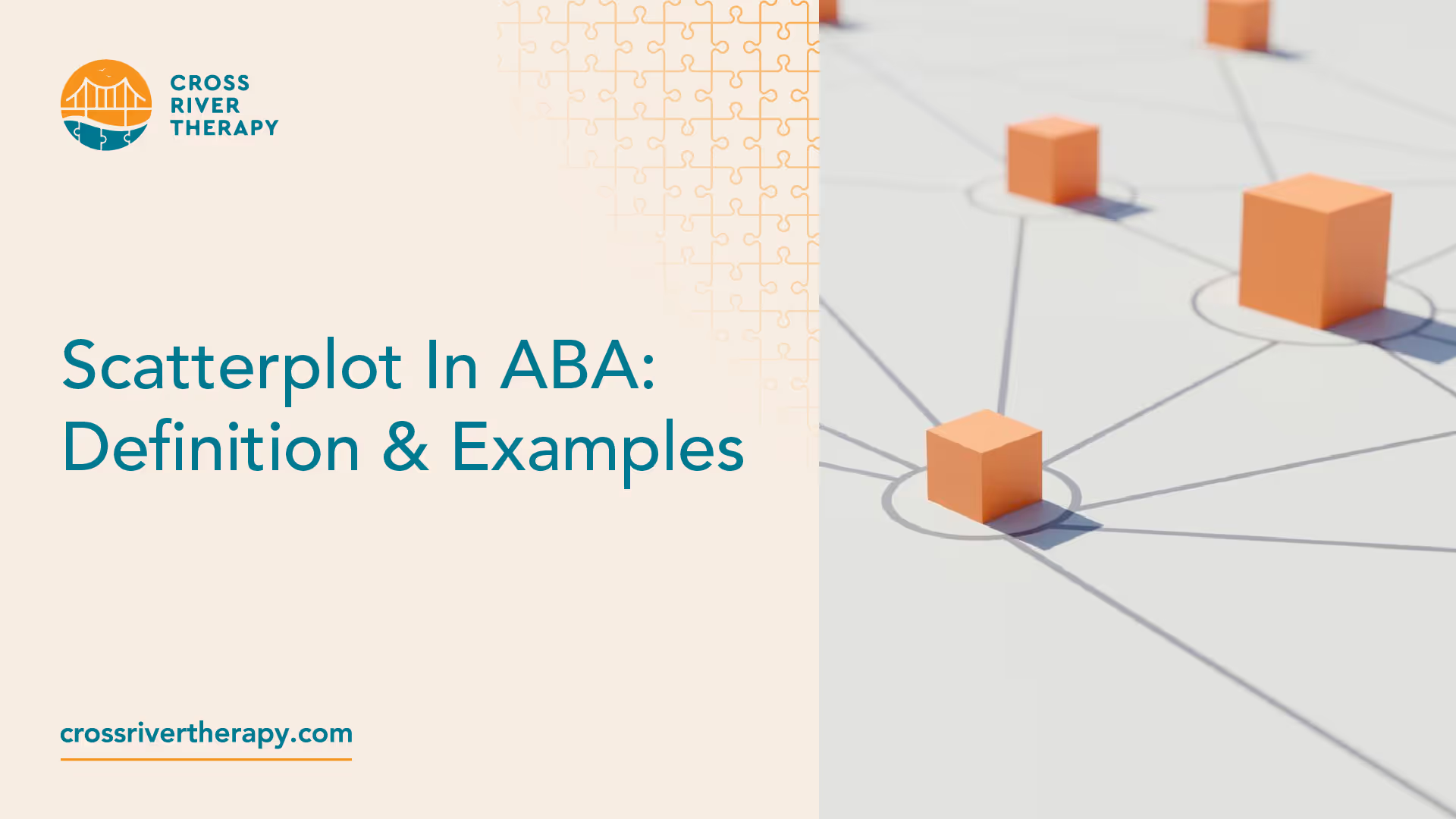Scatterplot In ABA: Definition & Examples
A scatterplot helps behavioral technicians find out different behavioral patterns that are of concern.


What Is a Scatterplot in ABA?
When used for Applied Behavior Analysis, a scatterplot helps behavioral technicians find out different behavioral patterns that are of concern. It provides critical information about specifics regarding the behaviors of clients that therapists see.
It shows when certain behaviors happen and the setting in which they take place. The information that's gathered with scatterplots helps ABA centers pinpoint when clients behave appropriately or when certain activities take place during the observation of their conduct.
Scatterplots can be used in ABA clinics with therapists for the treatment of children with autism, since kids with the diagnosis are known to show behavioral problems that are small to severe, like tantrums. Special needs teachers also use them in the same way that therapists do, but so can parents.
What Is a Scatter Plot Used For?
In an ABA clinic, a scatterplot is used to help out teams of therapists so that they can identify certain circumstances regarding the routines of the patients and clients they see. In school, this would be the route for students.
The data is used to either boost or mitigate certain behaviors in people that are of interest or become problematic. These routines can occur anywhere, such as in loud areas, at school, in the morning, or later in the day.
The data from scatterplots are gathered by one or several therapists that closely work with clients. It's carefully reviewed to ensure that the data is accurate and without error. It can be collected in periods.
These instances usually last about seven to 14 days on average, at least in a school setting.
For an ABA clinic, the data stretch for as long as specific therapy sessions take place.
When scatterplot data is gathered, the collector must start with a list or a schedule of the client's activities that occur during the week, including a timetable showing when it happens.
Additionally, behaviors are to be identified, with definitions showcasing which of those are of the therapist's most concern. This is what's needed most for a team at an ABA clinic to gather additional data for further analysis.
The therapist must also find out who persons will be responsible for collecting additional information that goes onto the scatterplot.
If behaviors are noted when an activity takes place, the collector must annotate this by adding a mark on a timetable that falls under the activity on that exact date being conducted.
When no behavior is shown, that area on the scatterplot can be left blank for the reminder. However, when data isn't gathered when activities happen, an alternative code should be indicated.
What Are the Advantages of Scatterplots in ABA?
The biggest advantage of scatterplots is that they show a link between a client's behavior and their progress over time. It's an effective way for nonlinear patterns to be noted as well, such as when a child's behavior suddenly becomes better when changes are made to their routine during therapy.
In short, scatterplots make patterns in behavior more observable and easier to gauge.
Recent News
Related articles

Working With Autistic Children: 10 Career Options
Want to work with autistic children? Here are 10 career options for you to consider.

What Is The Age Limit For ABA Therapy In Indiana?
Find out what the age limit is for receiving Applied Behavior Analysis (ABA) therapy in Indiana.

What Is The Age Limit For ABA Therapy In Arizona?
Find out what the age limit is for receiving Applied Behavior Analysis (ABA) therapy in Arizona.

Verbal Operants In ABA: Definition & Examples
In Applied Behavior Analysis, verbal operants are a type of verbal behavior.

Token Economy: Examples & Applications in ABA
A token economy is a procedure that was developed to help reduce maladaptive behaviors and increased desire behaviors by providing a tangible conditioned reinforcer.

Trigger Analysis In ABA: Definition & Examples
Trigger analysis is a segment of ABA therapy where children are taught by therapists to pinpoint the behaviors and emotions that happen before, during, and after an event that takes place.

Variable Ratio Schedule & Examples
A variable-ratio schedule is a random reinforcement where responses are reinforced following varied responses afterward.

Task Analysis In ABA Therapy: Examples & Strategies
Task analysis is a process of teaching that divides complicated activities into sections involving easier steps for students to more easily take.

Stimulus Equivalence In ABA: Definition & Examples
Stimulus equivalence shows how relationships can manifest among different types of stimuli in different situations.

Speech Therapy For Autism: ABA vs. Speech Therapy
ABA therapy can help individuals with speech impairments learn to better identify and utilize the language skills they already have.

Stimulus Control Transfer ABA: Definition & Examples
Stimulus control is defined as an expression used to detail circumstances where a behavior is triggered by the existence or absence of a stimulus.

Social Validity In ABA: Definition & Examples
Social validity is the acceptance of interventions concerning behavioral changes.

